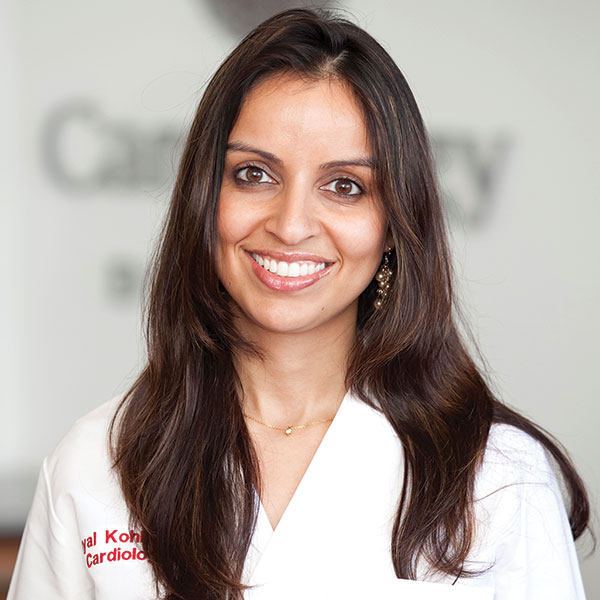Conversations With Kohli | Are Physicians the Weakest Link in Bringing a New Drug to Market?
 Payal Kohli, MD, FACC
Payal Kohli, MD, FACC
Not too long ago, I was at a rooftop bar in the meat packing district of Manhattan with my friend and former co-resident Phillip Green, MD, FACC. Phil is an interventional cardiologist at Columbia University and seeing him always results in a scintillating conversation.
Our conversation turned to sacubitril/valsartan and we asked each other to comment on our experience with the drug. I realized just how few patients in my practice are on this medication. Despite the PARADIGM-HF trial being published over three years ago and proving the efficacy of sacubitril/valsartan with convincing results, I could count on my fingers the number of my patients taking it.
On my way home, I wondered why I used the drug so sparingly (along with other drugs such as ivabradine). I realized all my barriers, other than the obvious cost issue, had nothing to do with the merits of the drug and everything to do with the system I operated within. All of us physicians face major barriers when incorporating new clinical trial data or technology into our practice — barriers that robust randomized controlled trial data, no matter how high quality and compelling, cannot easily surmount.
The first barrier is personal familiarity and clinical experience with a medication. Despite being immersed in an environment where we as physicians are driven primarily by “science” and “data,” the painful truth is that many of our clinical decisions are encumbered by the limits of our personal familiarity. For my own practice, I can see very clearly that with my complex patients I’m most within my comfort zone when titrating the familiar statins, beta blockers, ACE inhibitors or angiotensin receptor blockers — drugs I used most frequently when I was in residency and fellowship. I recognize that I’m uneasy when suddenly asked to introduce a novel drug, with which I have limited familiarity and clinical experience, to my sickest heart failure patients with a reduced ejection fraction – within the span of a 15-minute follow-up visit. My invisible threshold for starting a new drug is unconsciously much higher in this situation.
The second barrier is the scientific understanding of the pharmacology of the new drugs, which is complex and not always easily understood. A perfect example of this is the PCSK9 inhibitors. Despite being a major area of interest at the last half a dozen cardiology meetings, there are many physicians I know who still could not explain the mechanism of action of the drug and even more who probably can’t even spell out the name of the class of drug (btw, it’s proprotein convertase subtilisin/kexin 9)!
The third barrier is a tendency to get the “headline” result of a clinical trial, rather than a true understanding of the benefits and the limitations of the dataset. Information overload is a real issue in medicine, not just cardiology. Unfortunately, many busy clinical practice groups just cannot carve out the time for a deep dive into the data with scheduled journal clubs to discuss the latest randomized controlled trials. And, even if this is possible, it is often difficult to fully appreciate unidentified drug-drug interactions and adverse effects. Additionally, with the Sunshine Act, there are now restrictions on physician interaction with industry, which had been a major pipeline for informing physicians about newer drugs.
What does all this mean for our patients? The results of any new blockbuster clinical trial are only as good as the physicians who are prescribing the drug and the patients who are adhering to the prescription. Even if a drug is shown to save lives, what good is it doing if most doctors in the community are not using it or using it incorrectly?
The issue is not a new one and unfortunately it’s one without a simple answer. However, it’s an issue we must actively acknowledge. With all the health care dollars spent on research and development of new drugs, should some of our focus be shifted instead to better training programs for physicians so they do not become — inadvertently — the weakest link in the chain from bench to bedside for a novel therapy?
What are your barriers to using new drugs for patients? How can training be changed to help? Join the conversation on Twitter. To answer Dr. Kohli’s question, tag @ACCinTouch.
Keywords: ACC Publications, Cardiology Magazine, Angiotensin Receptor Antagonists, Angiotensin-Converting Enzyme Inhibitors, Benzazepines, Fellowships and Scholarships, Internship and Residency, Hydroxymethylglutaryl-CoA Reductase Inhibitors, Follow-Up Studies, Stroke Volume, Benzazepines, Aminobutyrates, Tetrazoles, Physicians, Drug Interactions, Heart Failure, Subtilisins
< Back to Listings

